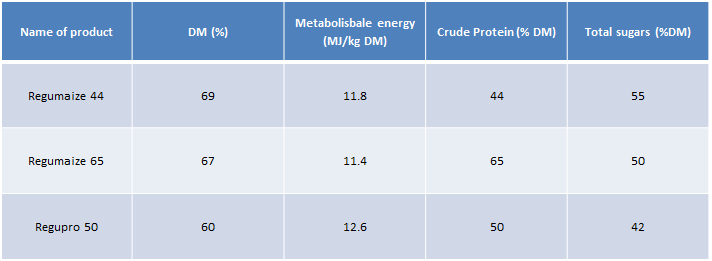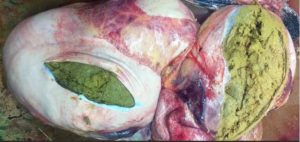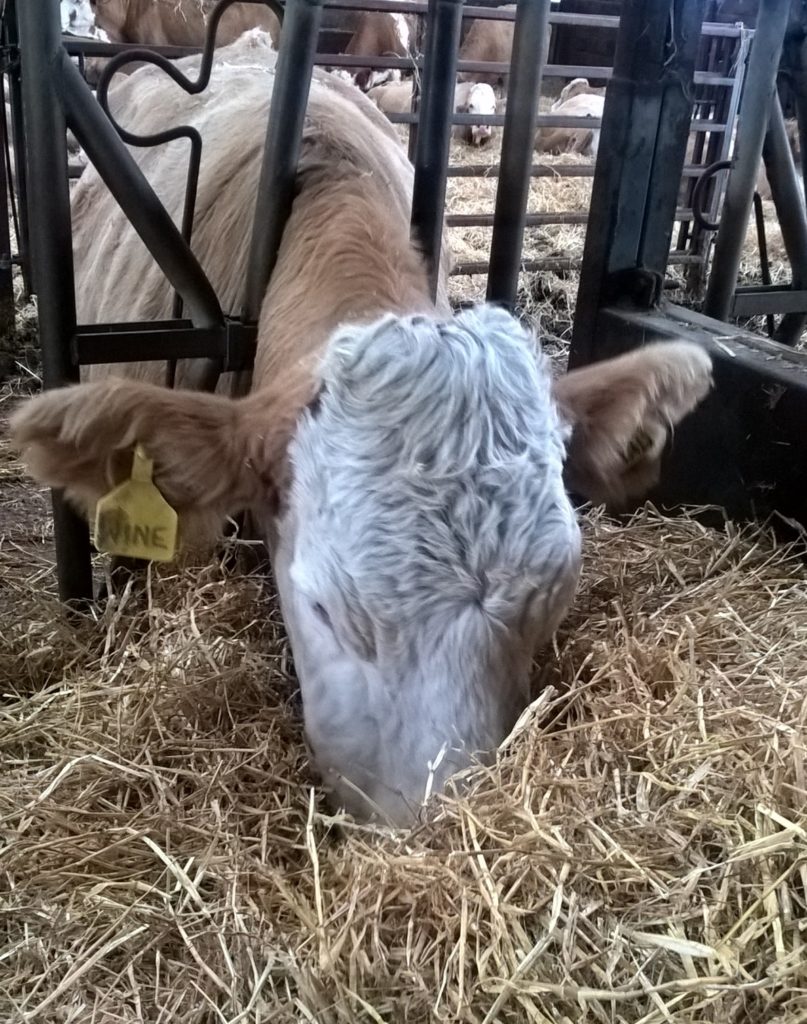Straw Diets for Suckler Cows – check your ration!
12 March 2019There have been recent reports of a number of rumen impaction cases related to beef sucklers fed on straw-based rations. These cases have been particularly prevalent in areas where there is a shortage of alternative higher quality forages such as silage or hay. Straw is low in energy and protein and very deficient in minerals. Straw is around 6.6MJ ME/kg DM and 3.5% CP in the dry matter. For good rumen function at least 9% crude protein is required.
Straw is insufficient protein – in particular, effective rumen degradable protein (ERDP) – to meet the requirements of the rumen bugs. These rumen bugs digest the straw into a form that the animal can use and they need protein and other nutrients to do their job.
Supplementing Straw Rations
Ensure the overall ration meets a minimum requirement of 9% CP (in DM). Good sources of rumen degradable protein are: rapeseed meal, distillers grains, urea (supplies nitrogen only so also need an energy source such as barley, urea has no energy value) and pot ale syrup. There are also many high protein (urea based) liquid molasses products available. The advantage of a molasses based product is that the sugar supplies fermentable energy to the rumen bugs which alongside urea provides the substrates required for rumen fermentation and forage digestion. Table 1 below shows some of these products and their nutritional value.
Table 1
‘Rules of Thumb’ for straw-based diets
- Essential to meet the requirement of rumen bugs, this is normally 90gCP/kgDM (9%)
- Make sure straw is clean and palatable
- The diet is very dry; ensure a plentiful supply of clean water
- Ensure all cows have good access to the supplement and the straw (ring feeders in a corner of the shed can cause intake problems)
- Don’t scrimp on the mineral supplement, ensure it is suitable for suckler cow straw diets with good levels of trace elements and vitamins
- As calving approaches consider adding silage with the straw to ensure cows get a smooth transition if they are on silage post-calving
Pay particular attention also to how the ration is fed. For these rations to work all cows need to have an adequate intake of the protein supplement. Ring feeders for example with liquid poured on top will not ensure that all cows get an even intake. All cows need to get good access to the complete ration to avoid issues of some cattle only getting straw. The key to success is to ensure that the nutrient requirements of the rumen are being met and the rumen will, in turn, feed the cow.
What to do if you suspect rumen impaction
Common symptoms include low appetites and very solid dung. Straw remains undigested in the rumen and gradually builds up until eventually, the animal dies. Unfortunately, as the animal is effectively “stuffed” it does not appear to be hungry (shown in the photo). The photo shows how straw has accumulated causing impaction within the abomasum (on the right) where the contents in a normal ruminant animal should be liquid.
If you have stock on straw or ammonia treated straw with little or no supplement and they are showing these symptoms then immediately supplement them or more precisely the microbes in their rumen. Suitable supplements would be 2 kg of a high protein urea-based syrup per head per day or 2 kg of a 50:50 rapeseed meal and barley mix. With the cow having to meet nearly all the requirements of her calf from her own body reserves it is essential to get the rumen working ASAP. To achieve this for the first 2 or 3 days the supplement should be fed twice daily i.e. a total of 4 kg per day.
If you have any concerns please consult your local nutritionist or vet.
Mary McDowell, mary.mcdowell@sac.co.uk
Sign up to the FAS newsletter
Receive updates on news, events and publications from Scotland’s Farm Advisory Service



